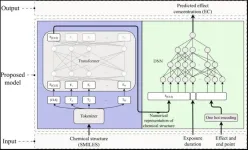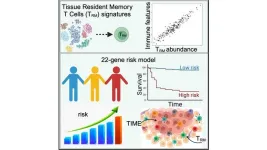People with Lower Income and Pre-Existing Conditions at Greater Risk of STEMI in the United States
Women, Black, and Hispanic Patients Up to 25% Less Likely to Receive Treatment for Heart Attacks Compared Men and White Patients
Long Beach, Calif. – May 3, 2024 – New data focusing on heart attack, specifically ST‐segment–elevation myocardial infarction (STEMI), uncovered socio-economic, racial, and gendered disparities associated with greater risk and are less likely to receive certain procedures. The data were presented today at the Society for Cardiovascular Angiography & Interventions (SCAI) 2024 Scientific Sessions.
STEMI, caused by a nearly total blockage of a coronary artery, is the most dangerous type of heart attack and can be deadly if not treated. Early diagnosis and treatment of STEMI is crucial for survival yet historically underrepresented groups have not received equal access leading to higher mortality rates.
“Advancing science in focus areas that bring to light disparities that exist is important to understand where we, as healthcare innovators, need to do more,” said George D. Dangas, MD, PhD, MSCAI, SCAI President. “As the leading organization representing interventional cardiologists,, it is up to us to start the conversation on these injustices, so we can address them and provide equitable care for all.”
Low-Income Patients at Greater Risk of STEMI Despite STEMI Incidence Decreasing Nearly 50% in 15 Years
Analysis of demographic trends in STEMI hospitalizations across the United States found lower-income patients are at greater risk of suffering from STEMI-related heart attacks. The study analyzed nationwide inpatient data from 2004 to 2020. The research team calculated annual hospitalization per population rates and assessed trends through regression analysis.
A total of 3,426,898 eligible patients were analyzed. The overall incidence of STEMI steadily decreased from 98.7 per 100,000 inpatient hospitalizations per population in 2004 to 49 in 2020 (p<0.01), primarily among older individuals. STEMI incidence increased in small and medium-sized hospitals but decreased in large hospitals. Mortality decreased for individuals over 85 from 25% to 22% and from 13% to 10.5% for those aged 65-84. In the 45-65 age group, mortality slightly rose from 4% to 5.5%, and patients aged 18-44 maintained a consistent mortality rate around 2.5-3%. Higher STEMI incidence and mortality were observed in the lower-income population. On average, the incidence of STEMI was relatively 20% lower in higher-income populations than lower-income populations, and this trend remained consistent from 2004 to 2020. It decreased from 107 to 54 per 100,000 population among those with low household income, while in the high household income group, it decreased from 85 to 42 per 100,000 population. The study also observed higher mortality in lower-income population, with adjusted odds of 1.12 (1.10-1.14, p<0.01).
“Seeing a decline in STEMI overall was surprising,” said Fares Ghanem, MD, cardiovascular disease physician at Southern Illinois University, and lead author of the study. “However, the disparities uncovered by our study emphasize there is a gap in care. We encourage clinicians to focus on providing equitable access to high-quality care through increased education and implementing targeted interventions for vulnerable populations. Our goal is for our data to be used to help create better, more tailored care plans for patients across the country.”
Women, Black, and Hispanic Patients Up to 25% Less Likely to Receive Potential Life-Saving Procedures After Heart Attack
A new retrospective analysis found that women, Black, and Hispanic patients were less likely to receive certain cardiovascular operations when compared to men and white patients. This retrospective analysis used National Inpatient Sample data from 2016 to 2020 and included adult patients with specifically type 1 NSTEMI, a certain type of heart attack. Patients who underwent coronary angiography (CA) or percutaneous coronary intervention (PCI) for NSTEMI were identified using ICD-10 procedural codes.
Among 2,153,124 NSTEMI patients, females had 18.4% lower adjusted odds of undergoing CA/PCI compared to males (p<0.001). Black and Hispanic patients had 25.4% and 16.9% lower adjusted odds of undergoing CA/PCI compared to White patients, respectively (p<0.001 for both). Similar disparities were observed with early interventional management (intervention within <24 hours) in white and male patients when compared to another cohort.
“As healthcare professionals, we are trained to care for all our patients equally regardless of race or gender,” said Mandvi Devendra Pandey, MD, resident physician at Texas Health Resources, and lead author of the study. “Yet, our study observed disparities in the interventional management of type1 NSTEMI patients. It is crucial to address these disparities not only to enhance individual patient outcomes but also to advance health equity and social justice. Our study can serve as a positive catalyst by raising awareness, advocating for targeted quality improvements, and healthcare system reforms so everyone can have better cardiovascular care.”
Session Details:
“Identifying Gender and Racial Disparities in Interventional Management of NSTEMI: A Nationwide Analysis”
Wednesday, May 2, 2024; 10:40 AM - 12:10 PM PT
Long Beach Convention Center. Exhibit Hall A, Lower Level
“Demographic Trends in ST-Elevation Myocardial Infarction Incidence and Mortality in the United States”
Thursday, May 3, 2024; 12:05-12:10 PM PT
Long Beach Convention Center, Exhibit Hall A: Andreas Grüntzig Theater 2, Lower Level
###
About Society for Cardiovascular Angiography & Interventions (SCAI)
The Society for Cardiovascular Angiography & Interventions, established in 1978, stands as the primary nonprofit medical society dedicated to representing invasive and interventional cardiology. SCAI's mission is to guide the global interventional cardiovascular community by fostering education, advocacy, research, and upholding standards for quality patient care. For more than 40 years, SCAI has exemplified professional excellence and innovation worldwide, cultivating a reputable community of over 4,500 members committed to advancing medical science and providing life-saving care for individuals, both adults and children, affected by cardiovascular disease. For more information, visit https://scai.org/.
For more information about the SCAI 2024 Scientific Sessions, visit https://scai.org/scai-2024-scientific-sessions. Follow @SCAI on X for the latest heart health news and use #SCAI2024 to follow the latest discussions.
END






